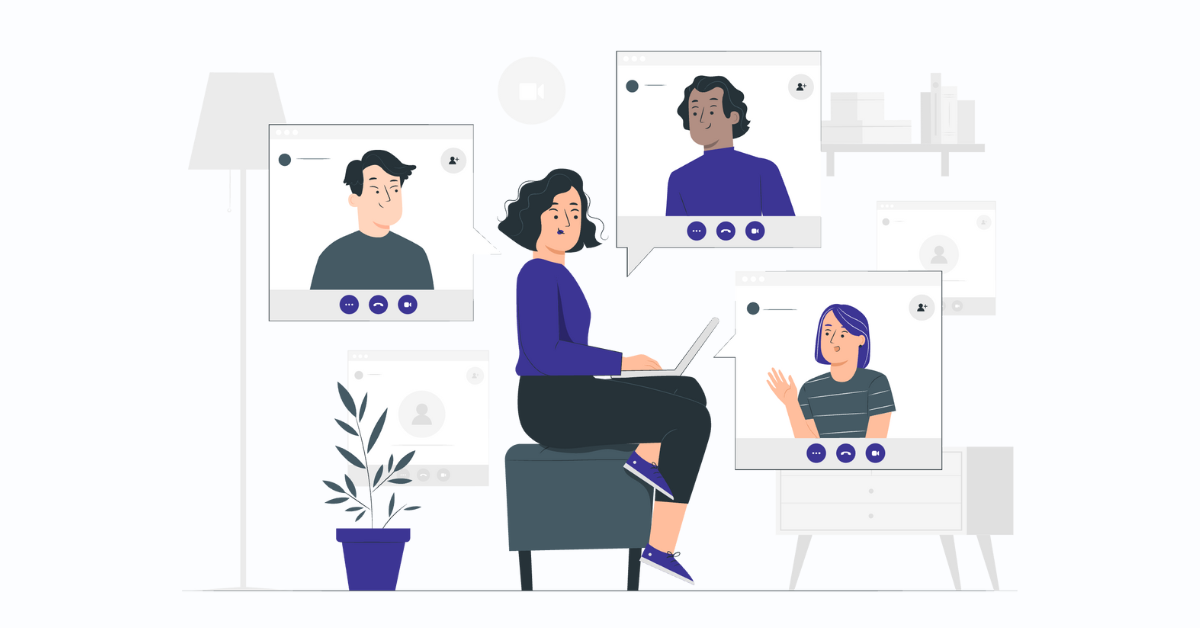Let’s be real. Remote work without the proper framework for company culture and connection can be plain lonely! Despite the WFH model’s life-changing pivot away from the dreaded daily commute, the flexibility of remote work often comes at a cost: poor employee experience.
With “90% of executives” deeming culture and connection to be lacking in their remote teams, the impetus to enhance the WFH experience is beyond doubt. Especially considering that “76% of U.S. workers” say that having strong work friendships makes them more likely to stay with their employer.
From employee retention, to job satisfaction and productivity, a lot is on the line when it comes to delivering a top-notch employee experience from afar. Here are four ways you can nail down an ideal WFH infrastructure by revamping communication channels and encouraging friendships in the digital workspace.
Harnessing the Power of Surveys
Surveys are the foundation for understanding your remote team’s needs, preferences, and pain points. Thus, the heart of your employee experience initiative starts with regularly gathering feedback. Through which, you can gather invaluable insights that allows for a better understanding of the challenges your remote employees are facing.
Along these lines, the power of surveys should be leveraged early on in the remote onboarding experience, where employees most often find themselves in a state of overwhelm and disconnect.
Much like getting used to a new job, a company’s internal comms structure doesn’t find its footing overnight. Surveys can help mitigate discouragement along the way and build trust between employees and management.
Elevating Engagement and Avoiding Zoom Burnout
With “63% of remote workers” participating in more online meetings than they would in-office, Zoom burnout is real! Though this prioritization of face-to-face connection on a daily basis may stem from well-meaning intentions of enhanced collaboration, hours in a digital conference room can quickly become overkill and even stifle creativity.
Given virtual interactions are the lifeline of remote teams, the object is not to eliminate Zoom meetings altogether but to shift the videoconferencing approach to foster more consistent and dynamic engagement among a dispersed workforce.
Instead of overwhelming remote workers with constant video meetings, the Cleary platform seeks to strike a balance between synchronous and asynchronous communication for optimized collaboration.
Particularly, streamlining your all-hands meetings with surveys, forums, and recaps helps cut back on unnecessary screentime for remote workers. This, combined with the use of designated channels for informal chats and updates that don’t require a video call aid the whole team in evading Zoom fatigue and improving time management.
Empowering Through Managerial Involvement
Remote work managers, particularly in the realm of HR, are tasked with overseeing the employee experience in a variety of ways. Namely, monitoring feedback channels and onboarding processes, providing employee rewards and recognition, and supporting team bonding. All of which hinge on a strong internal comms framework.
As regards combatting worker detachment, loneliness, and isolation, managerial involvement is particularly integral in laying the groundwork for peer-to-peer connections and work friendships.
Cleary’s culture products help make it easier than ever for managers to keep their team feeling valued and supported by making employee contributions known in the busy digital workspace and supporting the extension of non-work related interest groups and social clubs.
The WFH approach is still new ground for many managers and employees, so it’s imperative to create a digital landscape that doesn’t just allow for professional recognition and growth but a celebration of one another as human beings.
Mapping the Employee Journey
Employee journey maps help visualize and solidify touchpoints where remote employees interact with the organization – from preboarding to offboarding. By analyzing each stage of the employee lifecycle, organizations can better gauge how to integrate a more personalized and intuitive approach to their workflow and solidify company culture.
Moreover, the beauty of journey mapping lies in its potential to dispel the notion of remote employees as a homogenous entity. The diversity of roles, backgrounds, and needs within the remote workforce necessitates a multifaceted approach. A new hire navigating their WFH transition brings a unique perspective, distinct from a seasoned remote team member.
By acknowledging this diversity, organizations can better sustain support mechanisms and communication channels that resonate on an individual level. All of which fortify this first line of defense against remote works greatest obstacles today – from quiet quitting to burnout and isolation, communication gaps and ineffective onboarding.
At the end of the day, the WFH model is not a one-size-fits-all experience. As remote work continues to redefine the modern workplace, prioritizing the employee experience isn’t just a strategy – it’s a necessity for sustaining productivity, morale, and work-life balance.




